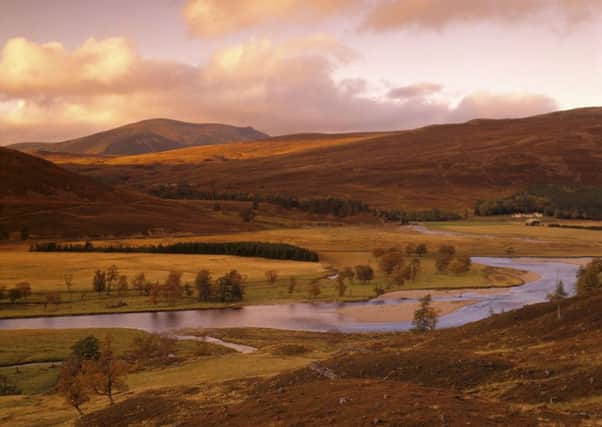Hunter-gatherers roamed Cairngorms 10,000 years ago


Excavations at sites deep in the glens, on the National Trust for Scotland’s (NTS) Mar Lodge Estate in Aberdeenshire, have produced radiocarbon dates which demonstrate a human presence as far back as 8,100BC.
The first evidence that hunter-gatherer groups were living in the Cairngorms was discovered on the estate in 2003, when a major footpath repair programme turned up prehistoric, worked stone artefacts.
Advertisement
Hide AdWithout radiocarbon dates at the time, only an approximate date for the artefacts was possible, with initial estimates of around 5,000 BC.
A project involving Aberdeen, Stirling and Dublin universities is now discovering how early people used upland landscapes after the retreat of the last glaciers – something about which very little is known in Scotland.
Radiocarbon dates of 6,200-6,100 BC from a site in Glen Geldie are described as remarkable because they coincide with the most dramatic climatic deterioration seen since the last ice age, in which permanent snow fields would have been a feature of the Cairngorms, and glaciers may have started reforming.
Trust archaeologist Dr Shannon Fraser said: “It is incredible to think that what we have discovered at this one spot in a vast landscape may represent a small group of people stopping for only a night or two, repairing their hunting equipment and then moving on.
“Glen Geldie is a very chilly place today, even with all our modern outdoor clothing – it is hard to imagine what it must have been like in the much harsher climate 8,000 years ago.”
The earliest dates come from a site in Glen Dee, at a key stopping point for travellers moving through mountain passes between Deeside and Speyside. The excavations by Aberdeen University are revealing a complex history of settlement, with people gathering by the riverside as early as 8,100 BC – perhaps only a few hundred years after communities begin to move back into Scotland as the ice retreated.
Advertisement
Hide AdThe sandy beach at this salmon-fishing ground continued to attract people for thousands of years, until at least 900 BC – the late bronze age.
Aberdeenshire Council archaeologist Bruce Mann said: “Not so many years ago, we thought we understood the glens of the Cairngorms, as a landscape largely empty of people in prehistory.
Advertisement
Hide Ad“Now this work has turned such thinking on its head, and shows the importance of why we support these projects.
“In the future we’ll be better informed about how we manage that land, while providing an amazing story for visitors to the area.”
The NTS and the three universities are behind the project to develop a better understanding of the estate’s prehistory.